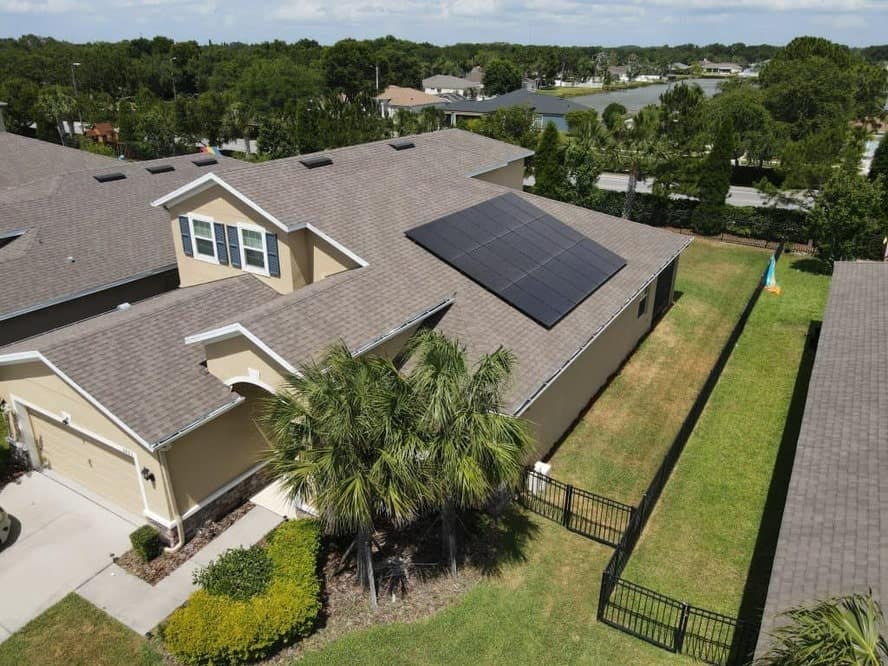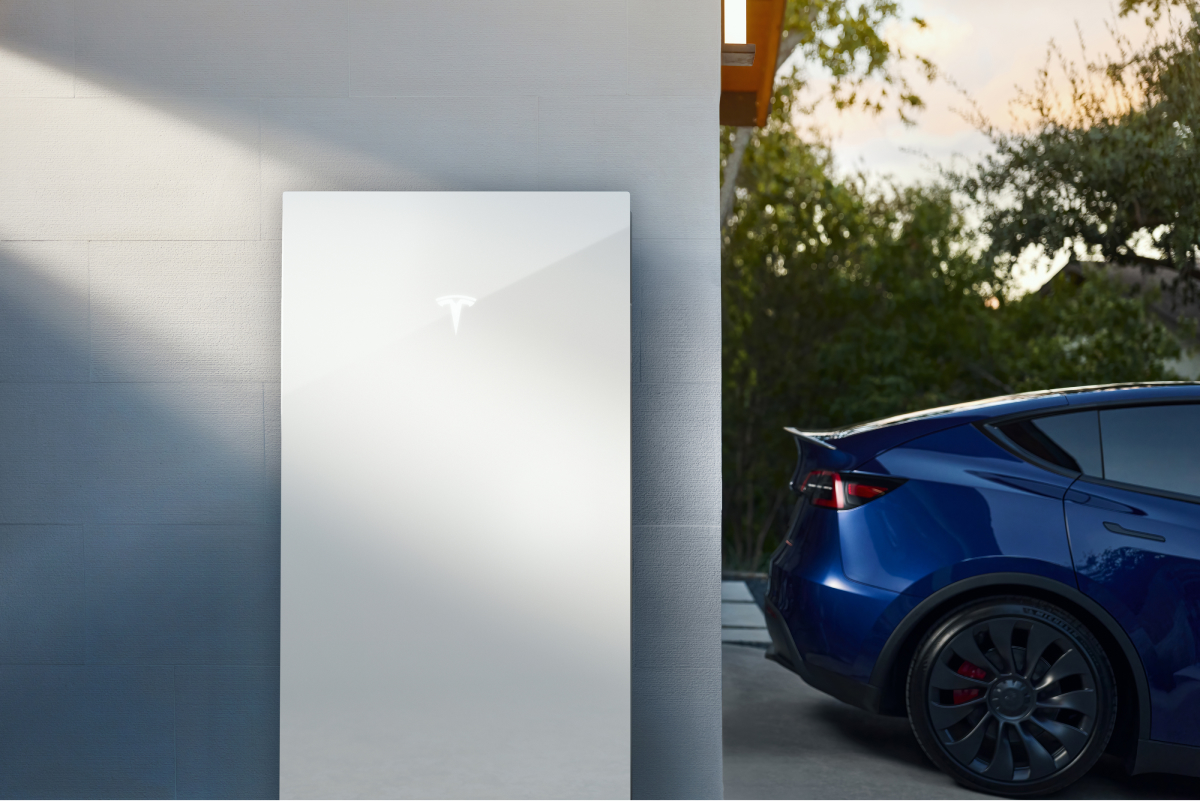Article
How Many Solar Panels Are Needed to Run a House?

Choosing the right number of solar panels for your home is a process that involves considering several different factors. Solar panels are not all equal. It is important to choose solar panels based on the amount of power they can produce. Let’s take a closer look at what you can expect.
How Do Solar Panels Work?
Solar panels absorb photons from the sun’s rays. When the sun strikes the panel, energy from the light is absorbed by the photovoltaic (PV) cells that are on the solar panels. That stored energy then creates electrical charges that move around in response to the internal electrical field within each of the cells. When this happens, electricity flows.
How Long Do Solar Panels Last?
There are differences between products. However, some solar panel systems can last for 20 to 25 years, sometimes longer. They are designed to be able to withstand the elements and are durable enough for many climates. Many times, solar panels come with a warranty that protects them for a set number of years. In some situations, panels last 50 to 80% longer than the warranty.
How Many Solar Panels Are Needed To Run A House?
The answer depends on several factors, including your home’s size and energy consumption. For an average American home, measuring around 2,480 square feet, 15 to 22 full-sized solar panels are generally required to replace your traditional energy sources completely. Your annual electricity usage, found on your utility bill, plays a significant role.
The average American household uses approximately 32,400 kWh per year. With the average solar panel generating between 0.26 to 2 kWh, at least 17 solar panels operating continuously can generate enough energy to replace your entire electricity bill in a week.
To accurately assess your needs, consider:
- Home Square Footage: Measured by calculating the width and length of each room and then multiplying to get the square footage.
- Annual Electricity Usage: Check your utility bill for your annual kWh consumption.
- Panel Efficiency: Solar panels’ energy generation can vary based on their efficiency and placement; south-facing panels are often the most efficient.
- Maintenance Costs: Factor in mandatory government-approved inspections, typically ranging from $150 to $450, when budgeting for solar panels.
By evaluating these criteria, you can tailor your solar panel setup to meet your specific needs.
Understanding Solar Panel Output for a Home
To illustrate, let’s consider a 1,000 sq ft home. If we use 10 solar panels, each with a capacity of 375 watts (totaling 3,750 watts or 3.75 kW), we can estimate the annual energy production. Assuming an average/above average level of sun exposure on your home’s roof, you can expect an annual kWh production of a number 1.25x the total wattage of your system. With a 3,750 watt system, you can expect to produce about 4,700 kWh a year. (This figure helps in understanding how a solar panel system can cover a home’s yearly energy usage.
What Are Peak Sunlight Hours?
One factor that plays a role in the number of panels you need is the amount of peak sunlight hours you need. Solar panels only generate electricity when they have direct sunlight. When the sun sets, they are not able to produce energy. Peak sunlight hours is the term used to describe the number of hours when your panels are in that direct sunlight path. Peak sunlight hours depend on where you live. Some areas, such as in the south, have many more hours of sunlight than those in the north.
To determine your needs, multiply the hourly energy usage you need by the number of peak sunlight hours the home gets. Then, divide that number by the wattage of the panel that you are planning to purchase. This helps you to determine how much power you need. During the installation process, you’ll learn more about how much power your panels can generate.
How Much Do Solar Panels Cost?
Costs range widely, though prices have fallen significantly in the last few years. They are more accessible than ever. Most of the time, a panel will cost between 50 and 70 cents per watt. For example, if you purchased a 350-watt solar panel, that could cost about $175. Let’s say that your home has 1,500 square feet. The total cost, with installation, could be around $18,000. Costs range widely, and there are numerous incentives available that could make this much less. Let us help you with more pricing information.
Are Solar Panels Right For Your Home?
The decision to switch to solar energy offers both environmental and financial benefits, but it’s essential to evaluate if your home is a good fit.
Ideal conditions for solar panels include:
- living in a climate with ample sunlight
- having a clear, unobstructed view of the Southern sky
- and residing in a state that provides solar tax incentives
These factors make solar panel installation a smart financial move, especially if you’re dealing with high energy bills and have the desire to become energy independent.
To explore how your specific location impacts the viability and benefits of solar panel installation, discover the solar potential in your state by visiting our Solar-by-State page, where you can find detailed information on state-specific solar tax incentives and support to make your transition to solar energy as beneficial as possible.
Are you interested in learning more about solar panels? It’s easier to have them installed and more affordable than you may realize. Contact us now to learn more about getting solar panels for your home:
Additional frequently asked questions about home solar panels
How many solar panels do I need for an average size home?
The average American home typically needs between 15 and 20 solar panels. That is based on average electrical use of 10,716 kWh annually. However, that figure may not match your needs because it depends on your energy needs. The size of your home, location, and many other factors play a role.
How many solar panels are needed for an 800 sq ft home?
A small home, such as one with 800 square feet of living space, is likely to require between 8 and 10 solar panels to power the home based on the energy consumption of a home that size and using panels that produce 375 watts.
How many solar panels are needed for a 1000 sq ft home?
With a 1,000-square-foot home, you can expect to need about 3,600 to 4,800 kWh of power annually. That means you are likely to need around 10 to 12 solar panels that produce 375 watts each for this size of home.
How many solar panels are needed for a 1200 sq ft home?
On average, a home that is 1,200 square feet will need somewhere between 12 and 14 solar panels to provide enough electricity for the home. Of course, this could fluctuate based on how much sunlight is in the area as well as the amount of energy consumption for the home.
How many solar panels are needed for a 1500 sq ft home?
A 1,500-square-foot home, on average, will need between 15 and 18 solar panels to power the home. This number could also go up or down based on how much power the solar panels produce. The more energy the panels can produce, the lower the number of panels needed.
How many solar panels are needed for a 2000 sq ft home?
Depending on energy consumption, location, and weather patterns, the number of solar panels needed for a 2,000-square-foot home can range from 20 to 24. This number is based on 375-watt panels. This would assume that the home uses, on average, around 9,000-11,000 kWh of power per year.
How many solar panels are needed for a 2500 sq ft home?
A 2500-square-foot home will usually need between 25 and 28 solar panels to provide between 11,500 and 13,000 kWh annually. This is based on the average consumption of power for a home this size. Other factors to consider are actual energy consumption as well as the total amount of sunlight in the area.
How many solar panels are needed for a 3000 sq ft home?
A 3,000-square-foot home, on average, will use 14,220 kWh of energy per year. If the home falls in line with this average, it will need between 28 and 32 panels to provide an adequate amount of power.
Want a Free Solar Estimate?
Fill out the form to get started today.


